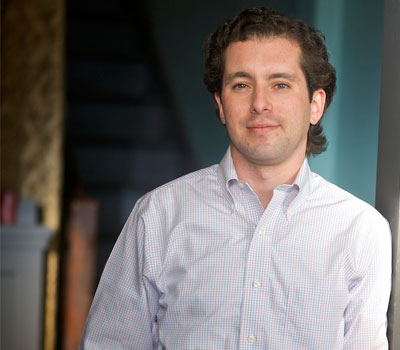Andrew Fortgang is one of the partners of Le Pigeon, which means he has some license to cellar things when he feels like it. As a result there are a surprisingly high number of older wines on his small, very dynamic list.


You have a fairly adventurous menu at Le Pigeon. Are people looking for adventure when they’re looking at your wine list?
We definitely have a lot of guests that are looking for something different, and they expect that with us. They’re not necessarily wanting to be so out there and wacky; we don’t want to be esoteric just for the sake of it. We’re trying to work in things that are just a little different, maybe, underappreciated classics. And for the people looking for no adventure at all, we have a couple things for them too.
I like that: Underappreciated classics. Which ones?
Well, Burgundy. Obviously it doesn’t lack for adoration, but we always need to find a reasonable entry point as far as price. So we try to have some selection of Santenay, Fixin, Auxey Duresses.
Or we’ll have some wines from the northern Rhône or the Languedoc. There are such great values in the Languedoc, and very high quality wines if you know where to look. And the Loire, definitely, the whites. And the Northern Rhône. About eight or nine years ago we did a feature on St. Joseph. It seemed like those wines were hiding in plain sight—great wines that represented great quality and value. Now St. Josephs are more expensive but there are still great things out there. There’s also a ton of Chablis, like Defaix, Vauroux; things like that represent great pedigree and a great value. Leaving France, there are great wines in Italy, Sicily, Piedmont—besides Barolo and Barbaresco.
So what would you call your focus?
I wouldn’t say we always try to make our focus on one thing, but sometimes it just happens. We increased our cru Beaujolais once to seven or eight—everyone gets excited about it and it sells. There was one time when we had just four Oregon pinots and eight from California. The best one came from California, and so did the worst. That didn’t work out as well, but now I have a lot of older California wines in the cellar. People are really happy when they see an ’09 from Littorai that they couldn’t dream of getting in Los Angeles.
And, I assume, some focus on Oregon Pinots?
Well, yes, when you live near a wine region you’re bombarded, in a good way, with wines and winemakers and projects. It means a lot for people to be on list. We try to keep a rotation—pull in a case or two and then we will switch to something else. It’s always a bit of a balancing act: we want to support young talent but it’s a dereliction to abandon those who have been doing great things for years. That’s true for our guests too. So we’ll sell by the glass, to support a smaller winery. Or when we want to feature special bottles from established wineries with some history. Then there’s the whole group that needs time to come around; we have those in our cellar while we sell other wines.
What else is new this year? Your numbers are up.
Well, we’ve had to raise our prices a little bit, especially in the sweet spot, though I’d say the markups for the more expensive wines are going down. It’s more fun to sell those for a little less. I’d rather sell an excellent bottle of Hermitage for a few dollars less and have someone recognize, ‘Hey, that’s a great price for that wine,’ and not settle for something else.
What else surprised you?
I think sparkling wine is starting to matter to people. It’s still a minority of diners, but more people are ordering Champagne or sparkling wine to have with their meal. So that’s new. Also chardonnay’s coming back. It’s resurgent in Oregon: There are a lot of great producers here. We’ve actually taken on more Oregon chardonnay and shrunk our Burgundy selections.
Patrick J. Comiskey covers US wines for Wine & Spirits magazine, focusing on the Pacific Northwest, California’s Central Coast and New York’s Finger Lakes.
















